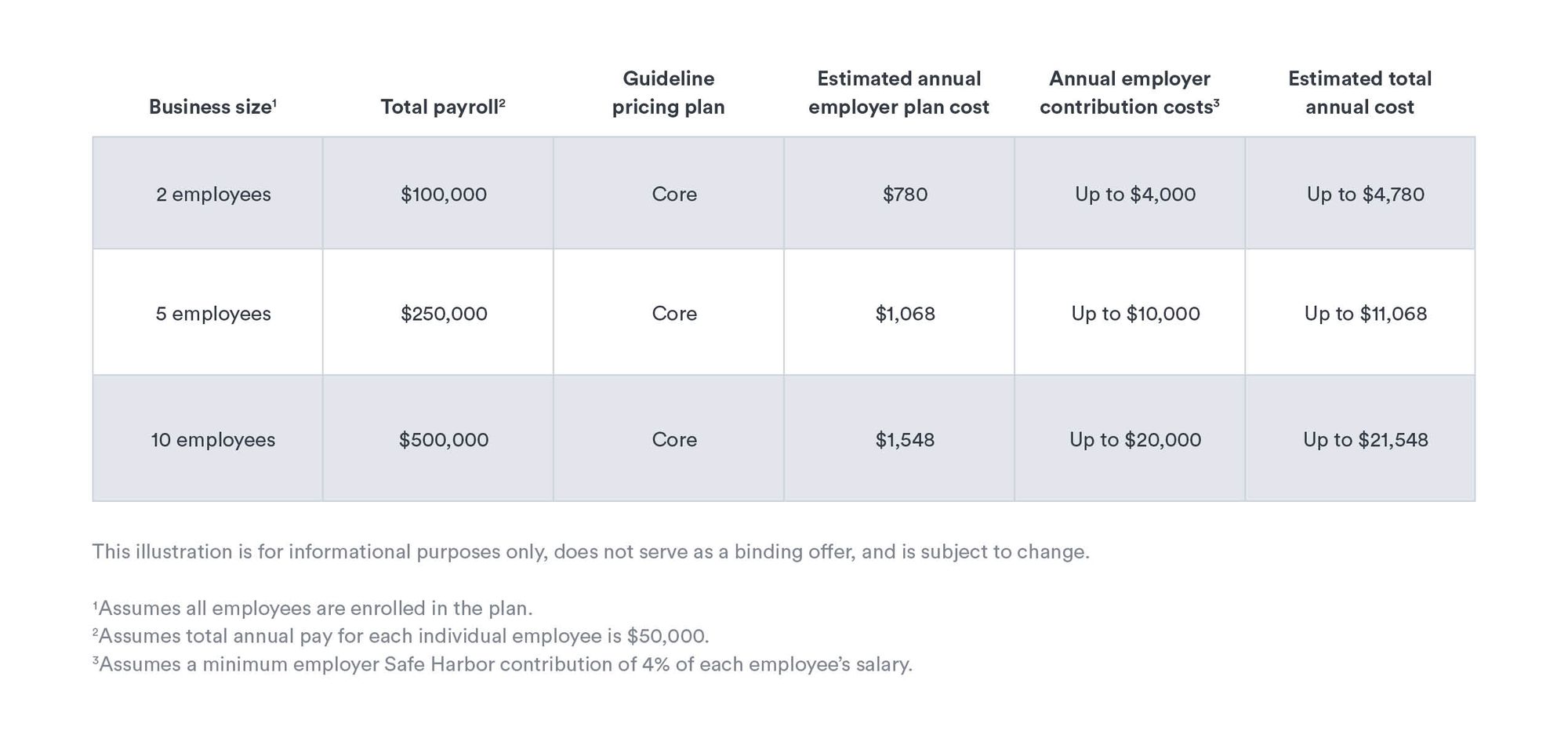
Safe Harbor + small business: a look at the data
While they have an unusual name and very specific requirements, Safe Harbor 401(k) plans are incredibly popular with small business owners. At Guideline, they make up 69% of our plans.
We cover a lot of the details—from contribution formulas to key deadlines—in our 2022 Safe Harbor Guide. But in a nutshell, Safe Harbor plans generally require less administrative work, they can strengthen an already popular benefit, and they can provide employers with peace of mind since there is less to worry about when it comes to most IRS nondiscrimination tests.
While they make up a majority of our plans, a lot of small business owners choose to open a traditional plan over Safe Harbor. The two most common reasons we hear are that small business owners don’t think compliance testing is a big risk for their business and that they don’t think they can afford a match.
While every business has different expenses and needs, we’ve used hypothetical numbers to estimate annual employer costs for a range of business sizes to help visualize the cost implications of starting a Safe Harbor plan with Guideline.

It’s pretty clear that depending on your pricing tier, employer contributions can generally make up the majority of a plan’s total annual cost. It’s worth keeping in mind that employer contributions that meet certain requirements are tax deductible—up to 25% of total eligible payroll.
So while making an employer contribution that meets Safe Harbor requirements is undoubtedly more expensive than not making a contribution at all, some of that added cost can help out your business in the form of tax deductions.
Safe Harbor 401(k) plans
As we mentioned, 69% of our plans are Safe Harbor 401(k) plans, but when you break it down by the size of the company, this percentage varies a lot.
- 0-4 employees - 80% Safe Harbor
- 5-9 employees - 74% Safe Harbor
- 10-24 employees - 60% Safe Harbor
- 25-49 employees - 47% Safe Harbor
- 50-99 employees - 41% Safe Harbor
- 100+ employees - 28%
A big reason smaller small businesses elect to open a Safe Harbor plan is because fewer employees means one change in personnel or an individuals’ contributions can have a bigger impact.
As an example, if you have 3 employees and one leaves the company, the ratio of employer contributions to your employees’ contributions could change drastically, which could potentially result in a failed test. For bigger businesses, these changes in personnel or individual contributions will usually have a smaller impact on the plan’s nondiscrimination testing results.
In addition to automatically satisfying most IRS nondiscrimination tests, Safe Harbor plans can give employees a little extra savings, and can allow owners and other highly compensated employees to take full advantage of the 401(k) deferral limits. With payroll deductions and tax credits from the federal government (with more incentives potentially on the way with SECURE Act 2.0), Safe Harbor plans can be pretty affordable for small businesses. And they can give their benefits package a boost to compete with the bigger businesses to boot.

This content is for informational purposes only and is not intended to be construed as tax advice. You should consult a tax professional to determine the best tax advantaged retirement plan for you.



